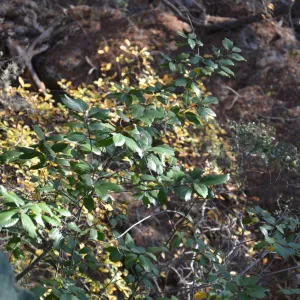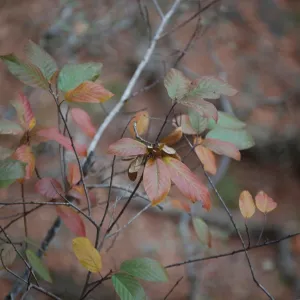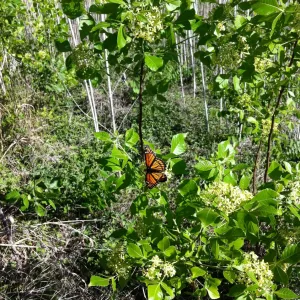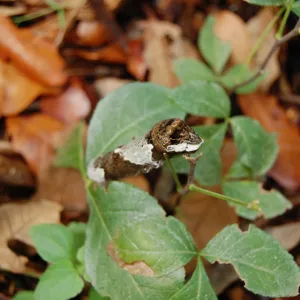By Delmar Cain – Boerne Chapter, Native Plant Society of Texas
Published in the Boerne Star on February 28, 2014
The days move by swiftly, geese are flying north and the second month of 2014 will be gone before we know it. At times it is hard to get everything done unless we can double up. That reminds me of an incident that was relayed to me by one of the Bonham twins when I was working on a matter in the Valley. The twins were working on a state highway road maintenance project with one flagging at the start of the project and the other flagging at the end. One observant lady stopped at the end and said, “Didn’t I just see you at the other stop?” Being handy with a flag and also quick with a response, the twin said, “Yes, ma’am, we’re a bit short-handed today.”
Our warm weather tells me that I had better double up also.
As I have repeated many times, the Boerne Chapter of the Native Plant Society of Texas (NPSOT) recommends ten NICE plants during the year for growing in this area. We try to ignore July and August. Unless I tell you about the NICE (Natives Instead of Common Exotics) Plants of the Month for both February and March or you might not have time to plant them, while it is reasonably cool.
To add natural complexity and eye appeal to your landscape, consider providing understory small trees or shrubs in the shades of the larger trees. Both the NICE plant for Febru
ary and the NICE plant for March will serve that purpose.

The NICE Plant of the Month for February, the Carolina buckthorn (Frangula caroliniana), also commonly called Indian cherry and Carolina false buckthorn, grows natively from the Hill Country east to the Atlantic Coast and as far north as Illinois and Ohio. Its natural habitat is in bottomland woods and ravines, so it grows well in partial shade with moist soil.

Depending on the location Carolina buckthorn will be a shrub or small tree. In the optimum location it could reach 20 feet in height but will usually be less than 15 feet.
Its leaves are glossy and bright green. The veins of the leaf curl toward the tip of the leaf. The leaves, usually two to four inches in length, have smooth edges and are elliptical in shape. Each is attached to the branch by a petiole that may be ½ inch in length. The tree is deciduous and will lose its leaves in the fall.
Small yellowish flowers appear in May and June, with red drupes or berries forming in the fall. The leaves remain green until late fall and will turn pale yellow or red before falling. Birds and wildlife eat the berries, which turn black as they ripen. Deer will browse the plant, so protection is recommended.
The NICE Plant of the Month for March, the Wafer ash (Ptelea trifoliata) also makes and attractive understory tree. It now grows natively from Arizona and Utah east to the Atlantic Coast and northeast into Canada, after being introduced in some of the more northern states and New England. It can grow in moist or rocky sites, but does better with moist conditions.
The Wafer ash is also commonly known as the Hop tree or the Common hop tree. It is in the Citrus Family and most parts of the plant are fragrant or aromatic. The native variety that we have here in the Hill Country has fruit that resembles an almost round wafer of yellow tissue paper with a flat seed in the middle. In other varieties the fruit varies in size and shape. According to the LBJ Wildflower Center the other common names apparently arose from reports of the use of its fruits as a substitute for hops in brewing.

The small tree or shrub seldom grows taller than 10 feet in our area. The leaves, bark and twigs have a citrus smell when crushed or broken. The leaves are trifoliate, meaning three leaflets like poison ivy, but are not known for being rash provoking. Unlike poison ivy the bark of the plant has been used for concocting home remedies.

The fragrant flowers of the Wafer ash are greenish white to yellow and grow in clusters, generally in April. In the fall the leaves turn an attractive yellow, before falling. Wafer ash is the host plant for the Eastern Tiger Swallowtail and the Giant Swallowtail butterflies. Other butterflies are attracted to the flowers.
For planting instructions these great understory trees or shrubs go to the Plant of the Month on the Boerne Chapter website at: http://www.npsot.org/wp/boerne/ Now is the time to double up and get both of them. They will add to the pleasures that you will find in your landscape.


